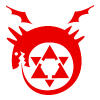Rotation force
Hello there,
I have a small problem. I''m designing a flight simulator and I have worked out how much force the elevator is produces up or down in Newtons. What I need to know is how do I convert this into an angular pitch rotation? What I mean is, how do I know how much of an angle do I rotate the vectors around the centre of gravity.
Thanks in advance
I only know how to get torque...
you need the center of gravity, the point at which the lifting force is being applied to the elevator.
Get a vector from the C.O.G to the applied-force-point, and cross-product that with the force vector. You will get a vector perpendicular to both. The length is the strength of rotational force (torque).
You now need to divide the torque value by the plane''s inertia along the center->force line, but I''ve never done this properly since it''s kinda messy unless you hardcode a precalculated value.
when you perform a rotation, you can rotate-on-axis using the torque vector.
you need the center of gravity, the point at which the lifting force is being applied to the elevator.
Get a vector from the C.O.G to the applied-force-point, and cross-product that with the force vector. You will get a vector perpendicular to both. The length is the strength of rotational force (torque).
You now need to divide the torque value by the plane''s inertia along the center->force line, but I''ve never done this properly since it''s kinda messy unless you hardcode a precalculated value.
when you perform a rotation, you can rotate-on-axis using the torque vector.
Like the previous poster said if you know the force acting on the plane at a specific point on the plane you get a vector from the center of gravity to the point where the force is applied (we''ll call this vector AB). Torque, by definition is the rotational force applied at a distance, so it is F * |AB|. Once you have torque you can easily find angular velocity. Torque is also, by definition, change in angular momentum versus time (dL/dt). Where L = a * m (a is the angular velocity and m is mass). So if you integrate torque with respect to time and divide by the mass of the airplane you will have the angular velocity of rotation.
-- Exitus Acta Probat --
-- Exitus Acta Probat --
This topic is closed to new replies.
Advertisement
Popular Topics
Advertisement
Recommended Tutorials
Advertisement







